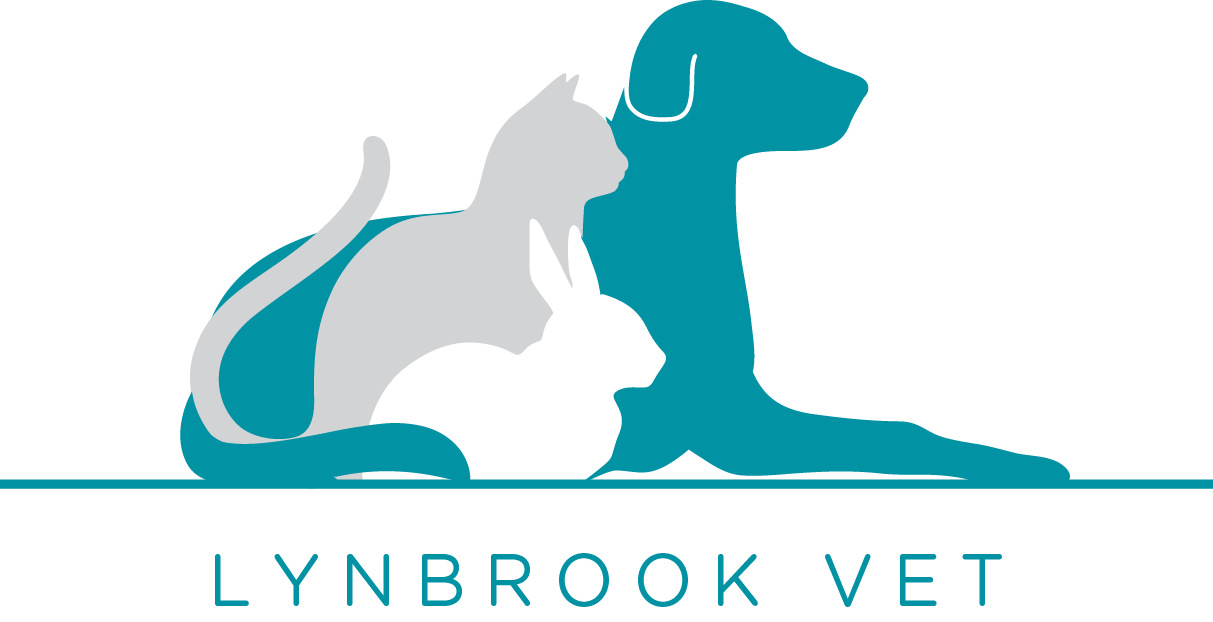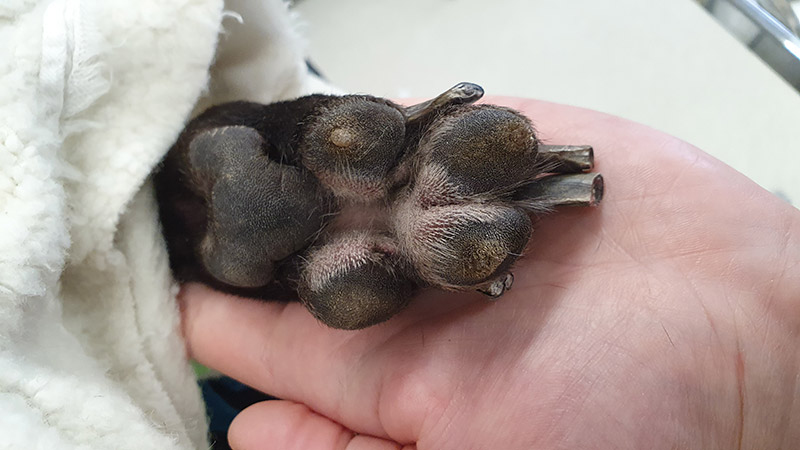Pet Dentistry Services
What is dental disease?
Dental disease occurs when tartar (calcified deposits of bacteria) builds up on the surface of the tooth. Tartar can be recognised on your pet’s tooth as a yellow or brown deposit. If tartar is not promptly removed it can lead to gum inflammation, pain and loosening of teeth which may require extractions.
Signs of dental disease in your dog or cat
- Bad breath
- Changes in eating habits e.g. chewing on one side of the mouth or reduced appetite
- Excessive drooling and teeth grinding
- Pawing at the face and mouth
- Red and bleeding gums
Why is it important?
Dental disease is the most common disease seen in veterinary practice.
- 75% of all animals presenting to a veterinary clinic will have some level of dental disease.
- 70% of cats and 80% dogs (100% of small breed dogs) will have dental disease by the age of 3 years old.
Dental disease can progress very quickly and the severity of the disease increases with age and lack of good dental hygiene at home.
The World Small Animal Veterinary Association (WSAVA) has classified dental disease as a serious welfare issue due to the widespread affects it can have on your pet’s overall health.
Dental disease can lead to
- Pain
- Chronic infection and inflammation such as chronic cough
- Reduced immune function leading to frequent illnesses
- Adverse effects on the heart, liver, lungs and kidneys
- Predisposition to diabetes due to insulin resistance
- Reduced quality of life
- Early mortality
The good news is dental disease can be prevented with consistent and regular dental hygiene practices at home. If you suspect your pet already has dental disease, please contact our clinic for further advice and appropriate treatment options. Call us on 03 8373 0301.
Now before we start grading teeth, let's talk about
Dental X-Rays & Staged Dentals
Just like us, our pets have one set of teeth to last their lifetime, and as such, they also require some TLTC (tender loving teeth care!).
As our pets mature the level of tartar (calcified bacteria) and gingivitis (gum disease) increases. But, there are some precautions we as pet owners can implement such as:
- daily brushing
- providing dental treats and dental diets to help delay the rate of dental disease
- using pet specific mouth wash and water additives
But often, just like us, our pets may require a professional clean which could include one or multiple dental scale and polish procedures throughout their life. This will protect the longevity of their teeth, but sometimes, oral health requires the extra attention of a staged dental procedure.
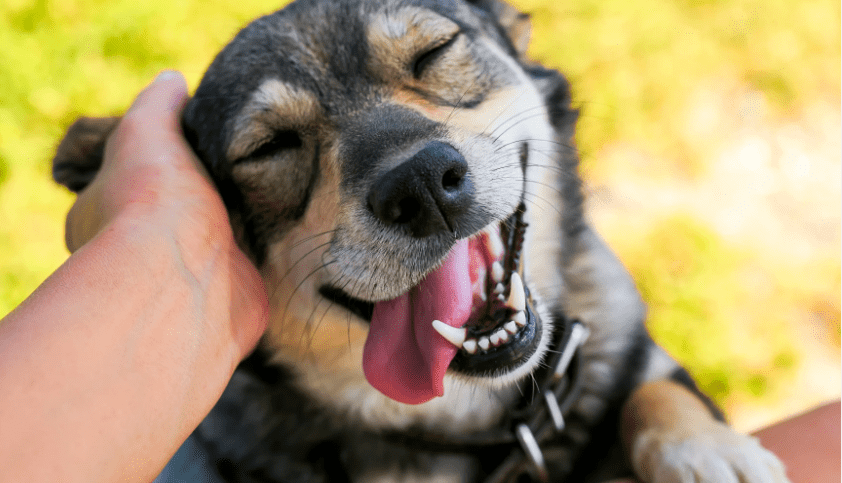
So what is a staged dental?
A ‘staged dental’ is a dental procedure that is split into 2 stages.
In stage 1 we anesthetise your pet and perform a thorough oral examination by performing full mouth dental x-rays to provide a clear picture of which teeth are healthy and those that need attention or possible removal. This is followed by a scale and polish of your pets’ teeth to remove tartar build.
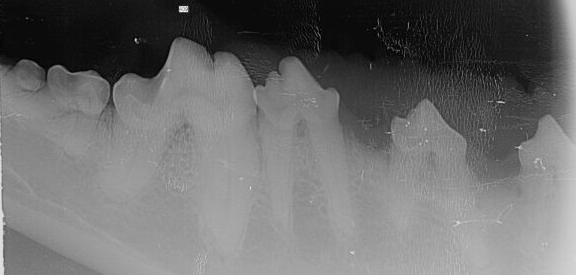
Why are dental x-rays so important?
Dogs have 42 teeth and cats have 30 teeth. On average we take 8 to 15 x-ray images in order to effectively access oral condition.
It can be helpful to think of a tooth a little like an iceberg.
On the surface, they may look healthy and pristine, but you can’t see what’s going on under the gumline. It’s only when we look at dental x-rays that we can diagnose an existing dental disease located under the gumline.
X-rays will allow us to discover things the naked eye just cannot.
For example:
- An extra root or an abscess that has extended to an adjacent/normal looking tooth.
- Unerupted or impacted teeth, which can lead to a bone cyst.
- Teeth that must be extracted need to be evaluated for root fractures or root ankylosis (fusion to the bone). Also, post-extraction x-rays can be done to ensure all parts of the tooth have been removed, especially in cases of tooth fractures.
- Cats are prone to “cavities” or what we refer to as resorptive lesions. Some lesions are located under the gums and are only visible on x-rays. Treatment is based on the evaluation of root structure, where intact roots must be extracted, while resorbing roots can be retained.
- Oral growths (cyst, infection or tumor) require x-ray assessment for treatment or biopsy.
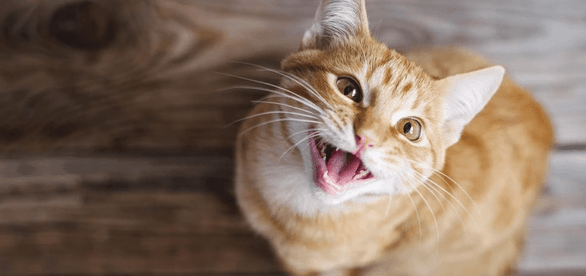
Why can’t all the dental work for my dog or cat be done in 1 go?
One word…safety.
For years vets have been doing dental procedures in one appointment, leaving pets under anaesthetic for long periods at a time and owners unsure of what costs to expect at discharge.
Did you know it is more dangerous for a pet to have one long anaesthetic compared to multiple short anaesthetics?
The reason for this is whilst an animal is under anaesthetic, they undergo a few physiological changes which can include a drop in body temperature, a drop in blood pressure and changes in cardiac rhythm.
In short, by breaking up the two procedures there is less strain on the body, so your beloved pet is safer.
Now that we understand the process, let's talk
Grading Dental Disease
Dental disease is graded from 0 to 4 depending on the extent of gingivitis, calculus, gum and bone recession, bad breath and pain. The grade of dental disease is important as it helps us stage the disease and ascertain its impact on the health of your pet, the urgency of intervention and the associated costs.
So, flip your dogs or cats lip and have a go at grading their teeth for yourself! If you feel that it is anything but a grade 0, your pet needs a dental check and health plan to prevent their teeth from getting worse. Please contact Lynbrook Vet for a dental health appointment.
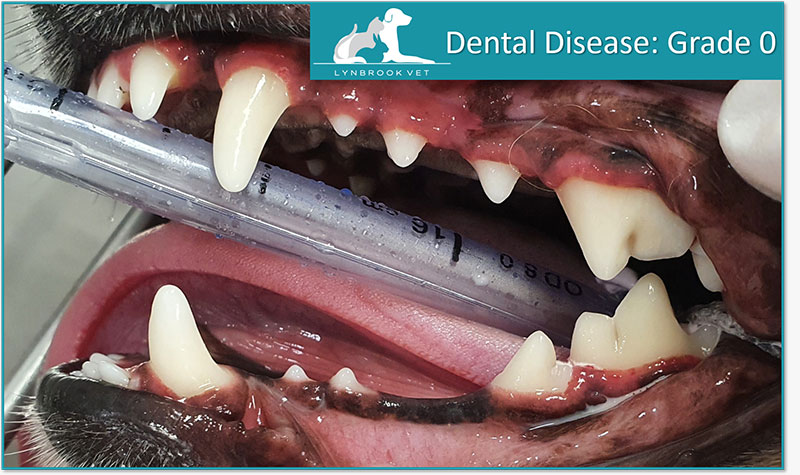
Grade 0
- No evidence of plaque or tartar
- Gums are healthy and pink
- No bad odour from the mouth
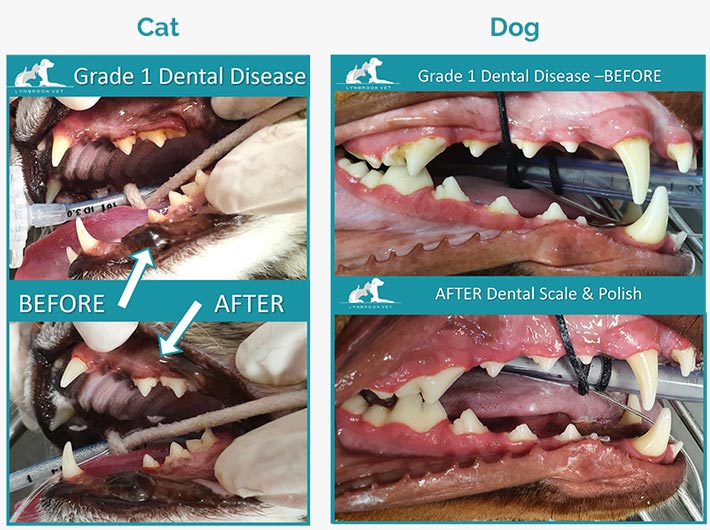
Grade 1
- Small amounts of plaque and tartar on the teeth
- Mild redness and swelling of the gums
- Bad mouth odour
Beyond Grade 1 the dental disease is irreversible
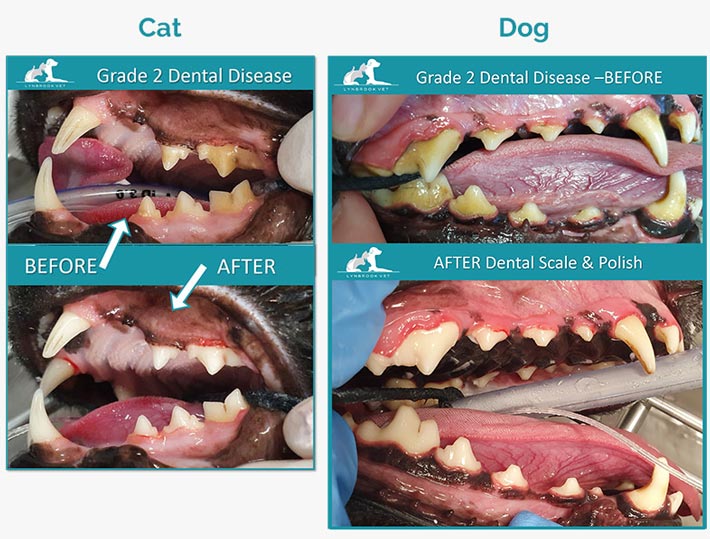
Grade 2
- Moderate amounts of plaque and tartar on the teeth
- Red, swollen gums that may bleed when touched
- Bad mouth odour
- Pain and discomfort
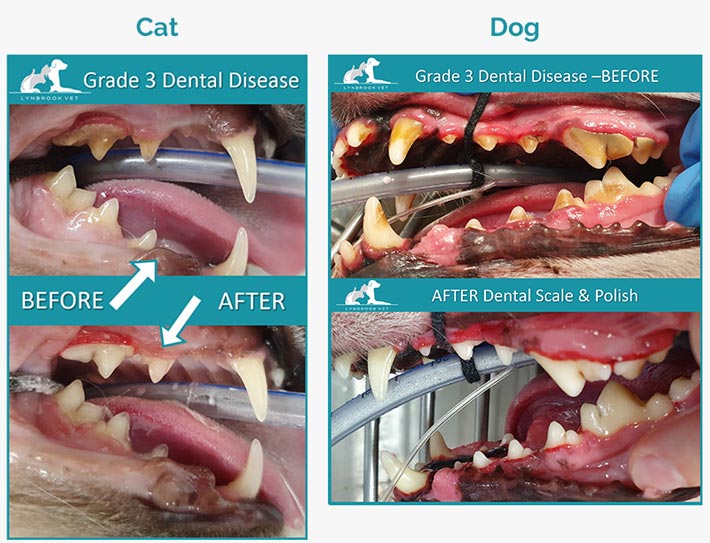
Grade 3
- Heavy build-up of plaque and tartar on the teeth
- Red, swollen gums that may bleed spontaneously
- Severely bad mouth odour
- Pain and discomfort
- Mobile teeth

Grade4
- Severe build-up of plaque and tartar on the teeth
- Severely red, swollen, bleeding gums
- Severely bad mouth odour
- Pain and discomfort
- Mobile teeth
